Throughout One Week (1920), Buster Keaton employs elements of both realist and expressive styles of filmmaking, in order to create comedy in the most effective means possible.
Realist
- The film is shot on location, meaning it is an accurate representation of America in the 1920s.
- Throughout the long shot of bride and groom walking down the steps, the camera remains in a static position. The viewer is not manipulated to direct their attention towards anything in particular.
- The rice throwing exhibited at the wedding captures a genuine cultural tradition present within 1920s America.
- Keaton’s character picks up a pair of shoes off the floor, demonstrating American paupers’ need for second hand items in a poverty-stricken time period.
- The costume design is very authentic and is evocative of 1920s America.
- During a three shot of Handy Hank, Keaton and Sybil the viewer isn’t encouraged to focus their attention upon a particular character.
- During each of Keaton’s stunts, the camera remains in a static position and no closeups are used. The viewer’s attention is not manipulated.
- Although Keaton’s stunts themselves are highly expressive, each are performed exactly as you view them by Keaton himself. No editing or special effects are used to accentuate them.
- Keaton’s behaviour towards the policeman is representative of the negative attitude and distrust America possessed towards authority figures.
- The appearance of a flat pack house as a plot device is a realist depiction of a social issue in America. A lack of affordable housing led to an increase in flat pack housing among those who could not afford pre-existing homes.
- A realist presentation of stereotypical gender roles are – Keaton’s character performs the physically laborious task of building the house while Sybil’s character cooks and provides for him.
- During the piano gag, a static long take long shot is utilised, which is a more realist manner of filmmaking.
- As Keaton climbs the pole, his daring athleticism is demonstrated by a static long take.
- The house was constructed on a turntable so that it could really spin during the storm sequence.
- The train collision was filmed exactly as it appears to occur, establishing a sense of realism.
- During the final shot, the streets of LA are displayed, informing us of the fact that Keaton filmed on location.
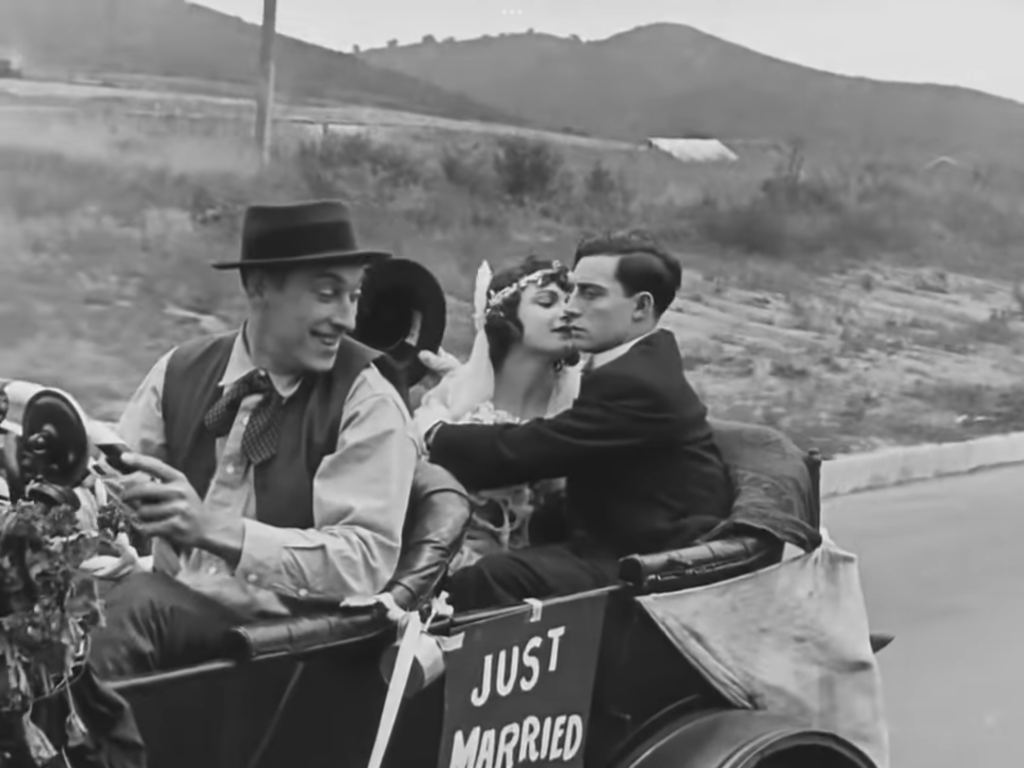
Expressive
- The film opens on a reverse iris shot, adding an initial aesthetic layer to the opening of the film. This expressive flair does not capture objective reality and sets the light-hearted tone present throughout the film.
- Intertitles are used throughout the film as to provide the viewer with explicit information, which contextualises the the events occurring in ways that silent action cannot.
- A description of the scene is provided by an intertitle (“such a sweet sound but such a sour echo). This expressive alliteration is used to create an evocative setting which the viewer is forced to accept.
- A cinema showing of silent films is typically accompanied by a piano/organ, which stylistically informs the viewer of the current emotion of the scene.
- Another iris shot is used to display the wedding bell, which manipulates the viewer into directing their attention towards it.
- Keaton utilises a crossfade transition between the wedding bell shot and the married couple walking down the church steps. This example of manipulative editing demonstrates the connection between the two shots.
- During the long shot of Keaton and Sybil walking down the steps, the two characters are centrally framed. Through this, the viewer’s attention is influenced as to where it will be directed.
- The rice is pelted at the couple in an unrealistically comedic manner, Keaton additionally utilises fast motion to accentuate the exaggerated comical effect. Shoes are also thrown to the floor, which is another hyperbolic scenario.
- We are introduced to Handy Hank through a closeup with a shallow depth-of-field. Due to this, the viewer’s attention is focused towards him as we view his cartoonishly exaggerated facial expression, depicting anger and jealousy.
- The shot of the wedding letter uses a vignette, which focuses our attention in a stylistic manner. The viewer is encouraged to read the letter, as there is nothing else to look at on screen.
- Each of Keaton’s stunts are centrally framed hyperbolised performance, which create an exciting set piece for the viewer. These daring acts highlight Keaton’s athleticism and daring bravery. For example, Keaton is conveniently standing in the perfect position for him to not be hit by the house as it falls, which is a reoccurring stunt throughout.
- Keaton assaults the policeman, which expressively represents America’s disdain for authority.
- Keaton’s use of slapstick humour throughout exaggerates each of the situations in a comedic manner.
- Another iris shot isolates the delivery driver within the frame which focuses the viewer’s attention upon him.
- As the flat pack house is delivered, it is conveniently positioned in the frame so that the viewer is encouraged to read the writing.
- An iris shot closeup of the directions informs the viewer that it will be an important plot point.
- The shot of the instructions uses vignette, focusing the viewer’s attention. Additionally, the text is left on screen for an appropriate amount of time in order for the viewer to read it.
- The fade to black suggests the passage of time, demonstrating Keaton’s method of conveying information through editing.
- The cartoonish gag of Keaton sitting on the beam is purely comedic and does not progress the plot. Cutting from a long shot to a closeup, the slapstick joke is conveyed in the most effective manner.
- Parallel editing is utilised to contextualise what both Sybil and Keaton are doing separately (cooking and working on the house).
- As Keaton falls from the roof, we cut to a long shot which demonstrates the fact that the camerawork is dictated by the course of the joke.
- Each of the sets are examples of unrealistic mise-en-scène and are meticulously constructed in order to display a daring acrobatic gag. The behaviour of both the set and characters are abnormal within a realist scenario.
- After the house is built, it is comically lopsided. The mise-en-scène is overly exaggerated in order to convey the fact that Keaton hasn’t built it properly. The abstract, surrealist architecture is also reminiscent of German Expressionism. The mise-en-scène continues to be hyperbolic as Keaton pulls down the light within the house.
- Sybil’s character breaks the fourth wall by acknowledging the audience’s presence by directly looking at the camera. To further this, a mysterious hand covers the camera as she reaches out of the bath. This extremely creative form of censorship expressively conveys the scandalous gag.
- The piano is comically light for one person and comically heavy for another.
- A couple of iris shots are used to focus our attention, first towards Sybil and secondly to accentuate the gag involving the piano falling through the floor.
- Each joke is told in a very episodic manner, the introduction of a new room typically signifies the beginning of a new joke.
- The camera is positioned in the most effective place as to make the gag as successfully comedic as possible. For example, we cut to an exterior shot as Keaton opens the door to the house.
- An absurdly comedic amount of people attempt to occupy a small table.
- An iris shot focuses our attention upon Keaton holding an umbrella.
- The spinning house gag is extremely surreal and this elaborate set allows Keaton to perform a multitude of daring stunts.
- The pace of editing quickens as the pandemonium heightens, manipulating the viewer’s emotions during the sequence.
- The action briskly pauses in order to tell a joke with an intertitle, briefly jarring the viewer.
- The house set is altered after the storm in order to expressively demonstrate the severe damage it has taken over the course of the storm.
- Parallel editing is used in order to inform the viewer of the train’s imminent arrival.
- In order for the train gag to be successful, it relies on the viewer’s warped perspective. The camera is placed in a particular spot as to manipulate what the viewer can see. We are also denied seeing the approach of the second train for comedic effect.
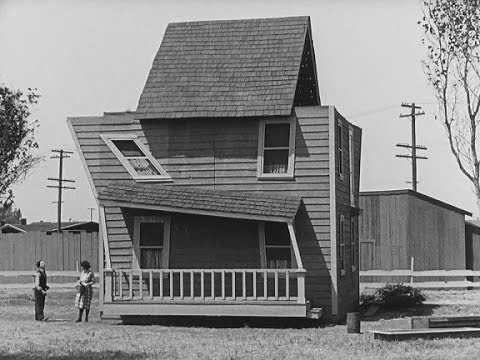
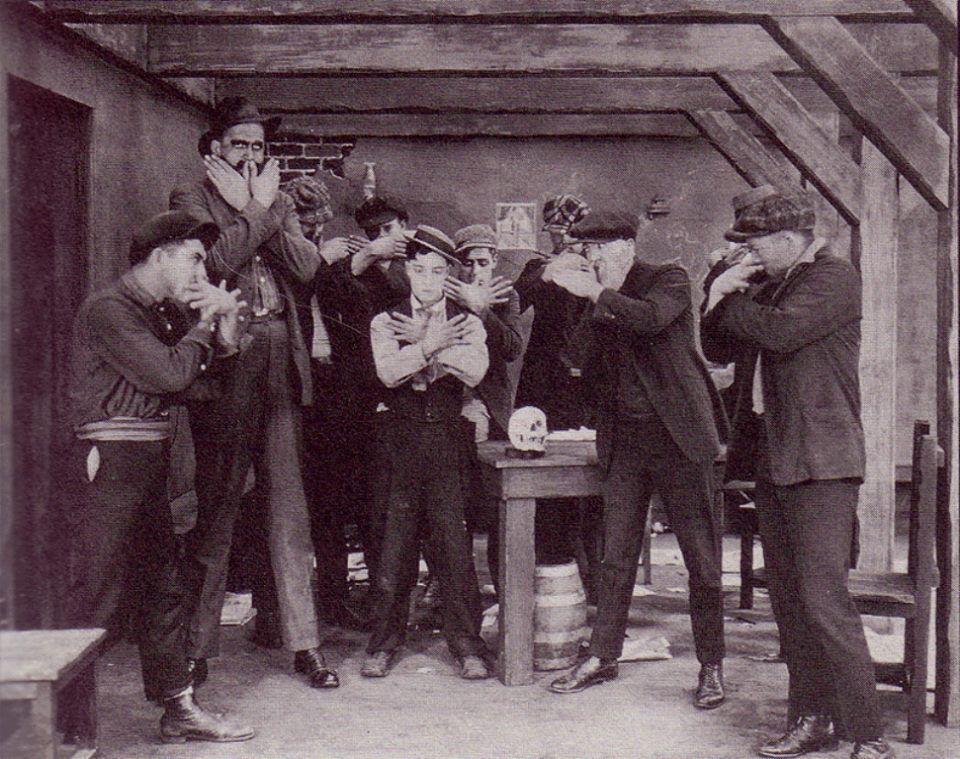
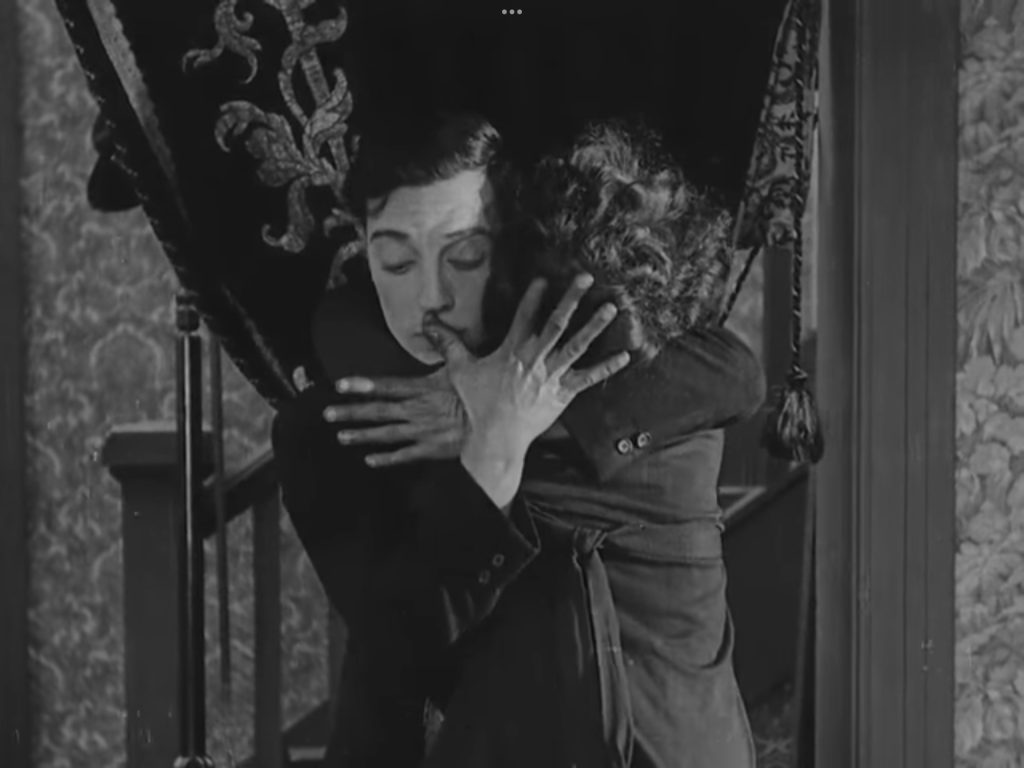
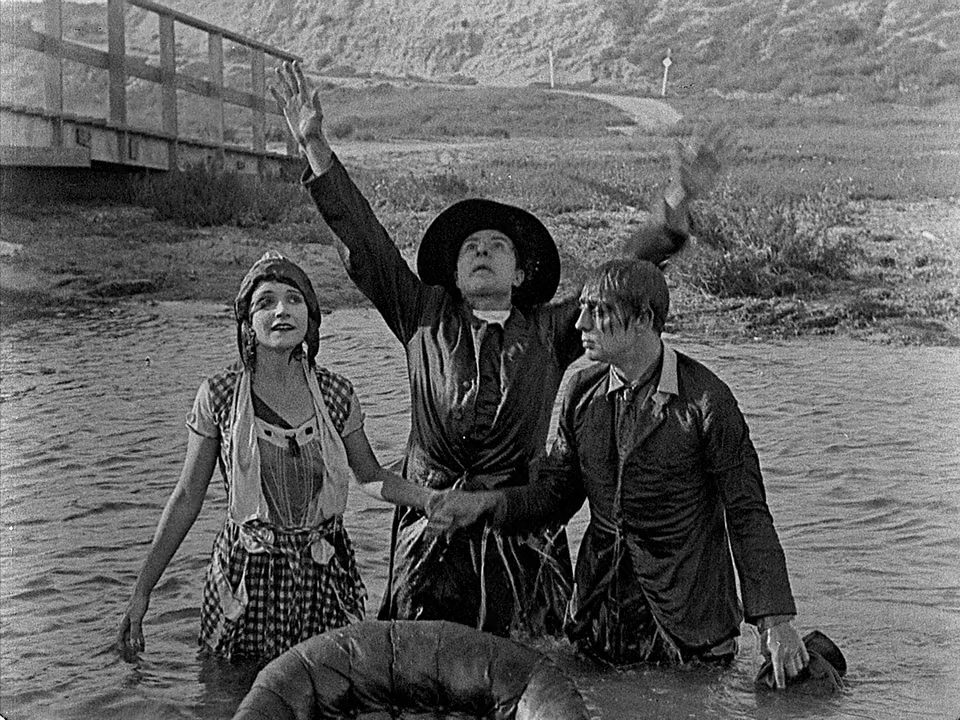
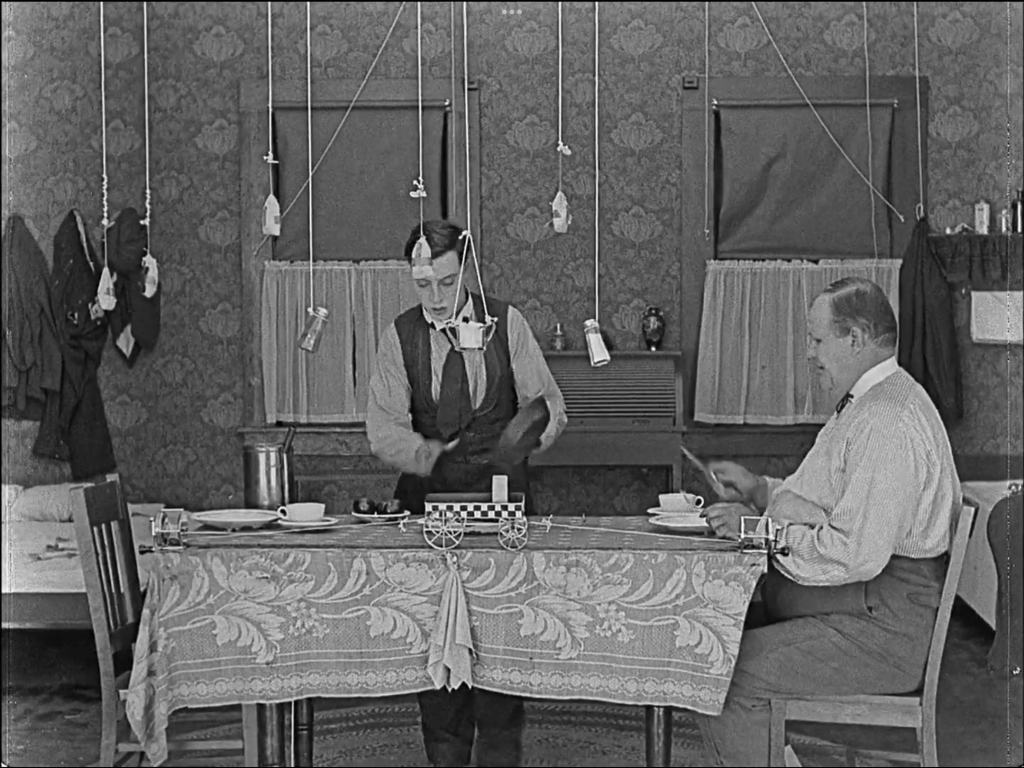
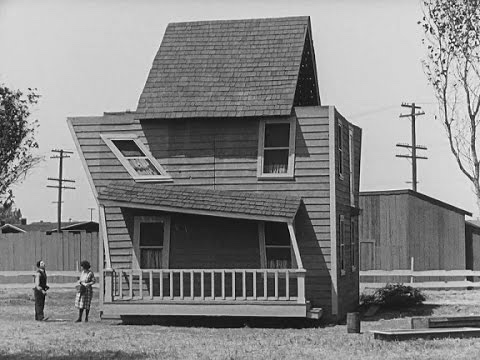
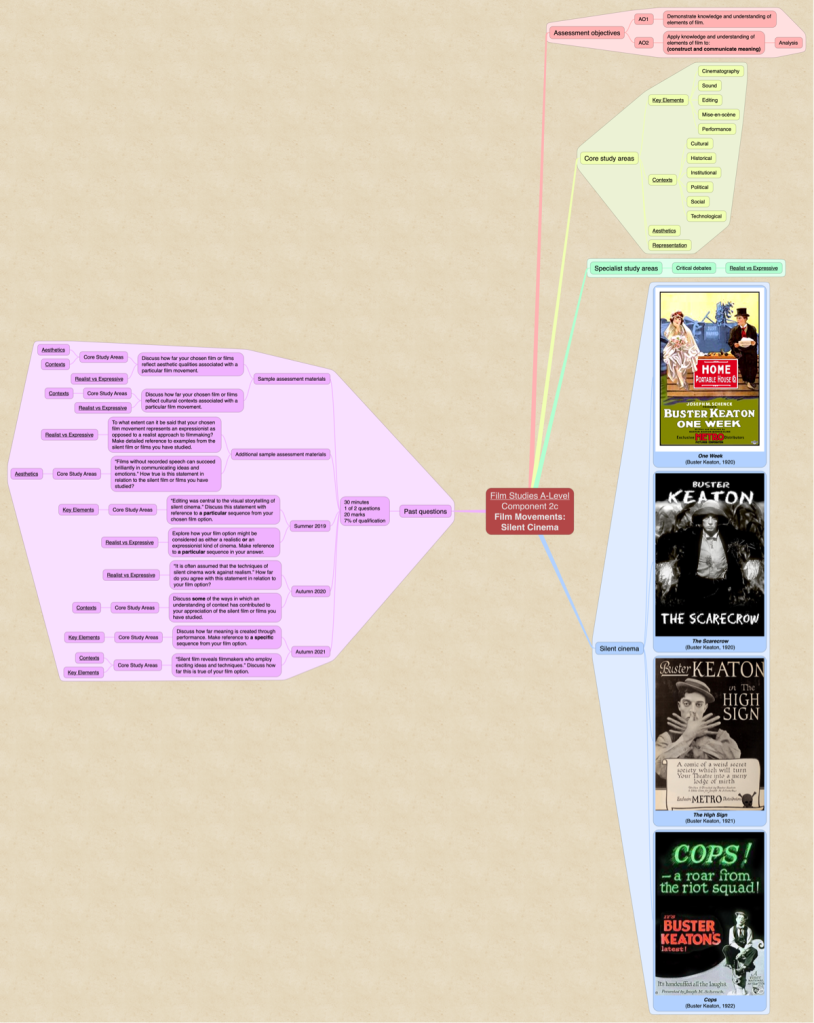
You must be logged in to post a comment.